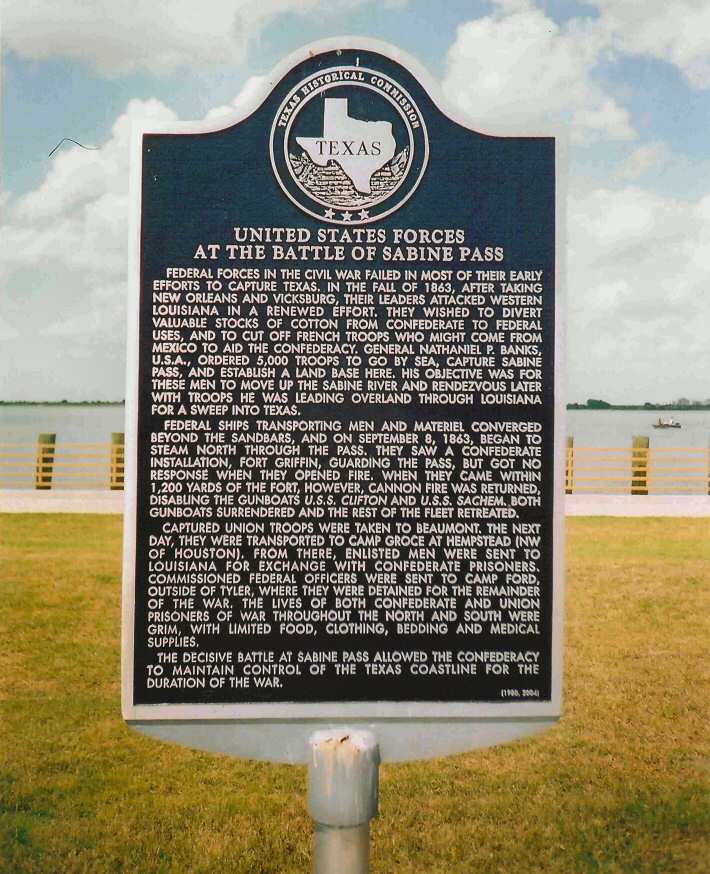|
Text of the
marker:
UNITED STATES FORCES
AT THE BATTLE OF SABINE PASS
Federal forces in the Civil War failed in most of their early efforts to
capture Texas. In the fall of 1863, after taking New Orleans and
Vicksburg, their leaders attacked Western Louisiana in a renewed
effort. They wished to divert valuable stocks of cotton from
Confederate to Federal uses, and to cut off French troops who might
come from Mexico to aid the Confederacy. General Nathaniel P. Banks,
U.S.A., ordered 5,000 troops to go by sea, capture Sabine Pass, and
establish a land base here. His objective was for men to move up the
Sabine River and rendezvous later with troops he was leading
overland through Louisiana for a sweep into Texas.
Federal ships transporting men and material converged beyond the
sandbars, and on September 8, 1863, began to steam north through the
pass. They saw a Confederate installation, Fort Griffin, guarding
the pass, but got no response when they opened fire. When they came
within 1,200 yards of the fort, however, cannon fire was returned,
disabling the gunboats USS Clifton and USS Sachem. Both gunboats
surrendered and the rest of the fleet retreated.
Captured union troops were taken to Beaumont. The next day they were
transported to Camp Groce at Hempstead (NW of Houston). From there,
enlisted men were sent to Louisiana for exchange with Confederate
prisoners. Commissioned Federal Officers were sent to Camp Ford,
outside of Tyler, where they were detained for the remainder of the
war. The lives of both Confederate and Union prisoners of war
throughout the North and South were grim, with limited food,
clothing, bedding, and medical supplies.
The decisive Battle of Sabine Pass allowed the Confederacy to maintain
control of the Texas coastline for the duration of the war.
1990. 2004 |

